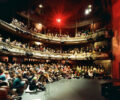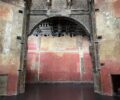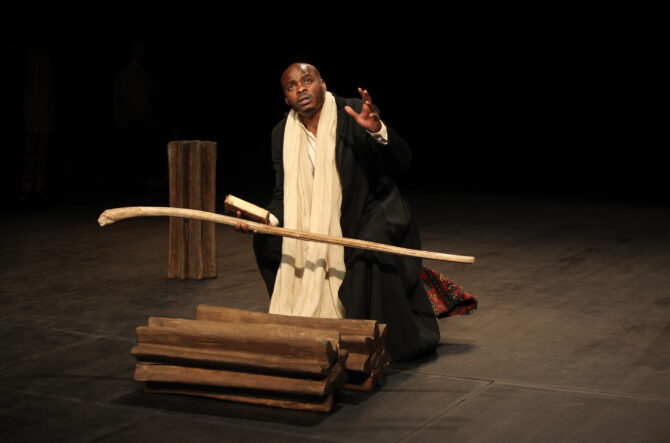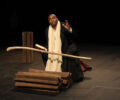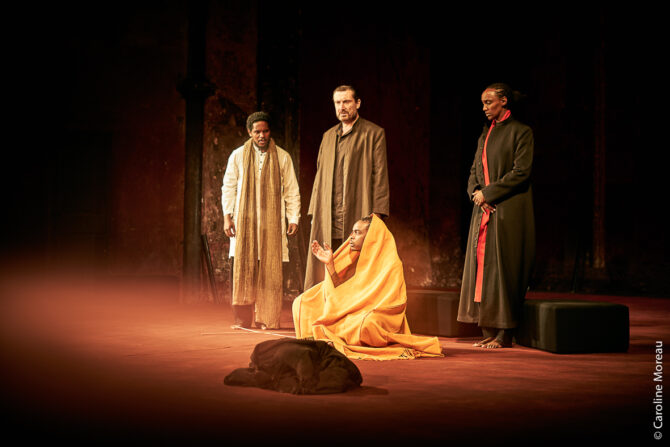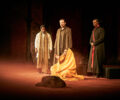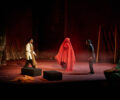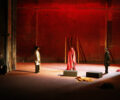Remembering Peter Brook, the Man who Said “Yes!”
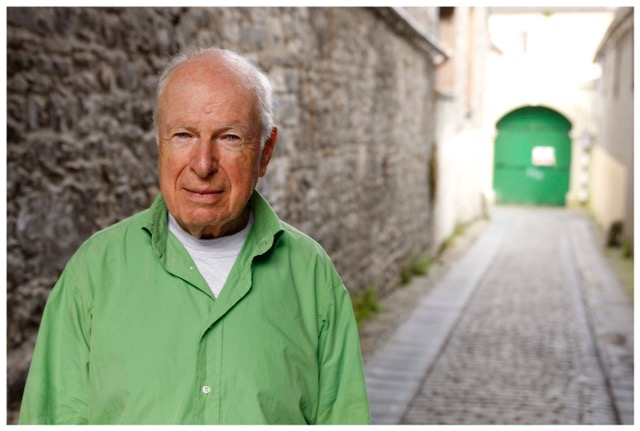

Paris pays homage to the visionary theater director on the centennial of his birth
One hundred years ago, Peter Brook was born in Chiswick, London on the first day of spring, a date traditionally signifying resurrection and new birth and entirely fitting for a man who spent his life pursuing innovation upon the stage and screen.
“When I was very young,” he wrote, “a voice hidden deep within me whispered, ‘Don’t take anything for granted. Go and see for yourself.’ This little nagging murmur has led me to so many journeys, so many explorations, trying to live together multiple lives, from the sublime to the ridiculous.” And explore he did, in every conceivable way.
When he died in Paris in 2022 at the age of 97, many had come to consider him as perhaps the greatest theatrical director of his generation — not that Brook himself particularly coveted or valued worldly renown. This was a man who reputedly declined the honor of a knighthood, after all.
Fame and recognition had come early. At the age of just 21 Brook directed Shakespeare’s “Love’s Labor’s Lost” at Stratford-upon-Avon. Two years later, he was named director of productions at the Royal Opera House, Covent Garden. He made his first film, The Beggar’s Opera with Laurence Olivier, while still under 30.
Les Bouffes du Nord
In 1970, Brook began a new chapter of his life when he put down roots in Paris. He had come to find the conventions of traditional British theater stagnant and had quite a different vision of something more avant garde that dared to experiment and break the rules. To that end, he assembled a company of actors, dancers and musicians from diverse national and cultural backgrounds who could attract and speak to a broader audience.
In order to succeed in this new environment Brook needed a reliable partner who knew the ropes in France and could obtain the permissions that would allow his projects to move ahead. That person turned out to be Micheline Rozan, who became his co-founder of the International Centre for Theatre Research (ICTR).
Key to realizing his Paris dream was the right performance space. “It was at this point that the [Bouffes du Nord] rose miraculously from its ashes, just when it was needed. Micheline had heard rumors of a [derelict theater behind the Gard du Nord], so one day she and I crawled through a hoarding on hands and knees, and when we stood up, we found ourselves contemplating a forgotten, battered shell, within which was a space that fulfilled all the requirements that we had discovered during our travels. It is an intimate space, so the audience has the impression that it shares the same life as the actors; it is a chameleon space, for it allows the imagination to wander freely. It can become a street corner for rough performances or a shrine for ceremonies.” It was decided to leave the space as is and ensure it was always “simple, open, and welcoming.”

Les Bouffes du Nord. Photo credit: Philippe Vialatte
Fifty years later, les Bouffes is still going strong. (The name Bouffes is associated with opéra bouffe, a genre of light comic opera common in the 19th century, and the Bouffes du Nord has always included both theater and music.) To launch its inaugural season, unsurprisingly, Brook chose a work by Shakespeare, “Timon of Athens.” More Shakespeare followed over the years, as well as works by more recent Western playwrights such as Chekhov, Brecht, and Beckett, not to mention original interpretations of operas such as Mozart’s “The Magic Flute,” and Bizet’s “La Tragédie de Carmen.”
Mention must also be made of the Mahabharata, an Indian epic drama drawn from Hindu mythology that recounts the struggle of a warring dynasty of cousins. Some critics have called it Brook’s masterwork; it was certainly his most ambitious project. Though the stage at les Bouffes was unable to accommodate the full nine-hour production, two shorter excerpts, “La Mort de Krishna” and “Battlefield,” did run there.
Of particular interest, this season, from March 14-29, les Bouffes is again presenting “The Tempest Project” (in French), a fluid and much abbreviated reinterpretation of Shakespeare’s enigmatic last play as conceived by Brook and his long-time collaborator and co-director Marie-Hélène Estienne.
The directors of les Bouffes recently donated its extensive collection of Brook memorabilia and artifacts to the Bibliothèque Nationale de France (BnF).
To mark the centennial of his birth, that institution is preparing an exhibition entitled “Peter Brook aux Bouffes du Nord. Le théâtre du monde.” Scheduled to run from April 12 through October 8, 2025. It will be presented in the Richelieu wing of the main museum in la Rotonde, an intimate space reserved for special collections.
The room may be small, but it will be packed with items such as Ganesha’s mask from “The Mahabharata,” plus others from the 1990 production of “The Tempest.” There will be marionettes from “The Conference of the Birds, more than 20 costumes, and a wide selection of photos, posters, programs, texts, and drawings. A video monitor will screen clips of scenes from notable performances and also of Brook himself discussing Shakespeare.
After the exhibition closes, the collection will be transferred to the BnF’s archives, where it will remain accessible to future generations of students of the theatrical arts. Brook would have wished for nothing less.
The end is not in sight
And so Peter Brook’s story continues. As he writes in his memoir, Threads of Time, “There will always be new projects, new directions, new enthusiasms. I will still cling uselessly to a leaf, my horses will continue to gallop in opposite directions, leaping and falling, a glittering piece of red tin will be as seductive as something of infinite value, and a voice will often murmur, ‘If you let this moment pass, it will never come again.’
“Yet at any moment, we can find a new beginning. A beginning has the purity of innocence and the unqualified freedom of the beginner’s mind. Development is more difficult, for the parasites, the confusions, the complications, and the excesses of the world swarm in when innocence gives way to experience. Ending is hardest of all, yet letting go gives the only true taste of freedom. Then the end becomes a beginning once more, and life has the last word.
“In an African village, when a storyteller comes to the end of his tale, he places the palm of his hand on the ground and says, ‘I put down my story here.’ Then he adds, ‘So that someone else may take it up another day.’”
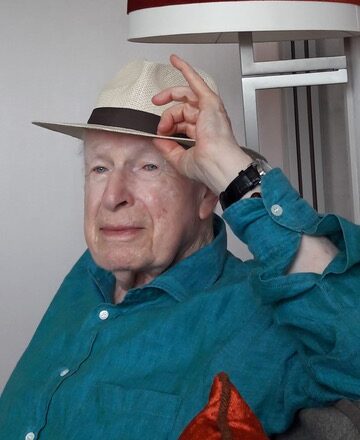
Peter Brook. courtesy of Marie-Hélène Estienne
On a Personal Note
It was my good fortune to have known Peter — as everyone called him — over the course of many years. Long before I met him I had sat in the audience at his Broadway production of “Marat/Sade” and a few years later was entranced by “A Midsummer Night’s Dream” in Stratford-upon-Avon — the impressions linger to this day. A decade or so later, I discovered that we had some acquaintances in common and Peter would generously welcome us into his orbit from time to time in small gatherings. During the last couple of years of his life, I had the privilege of spending time with him more personally.
Well into his 90s, Peter would still appear at les Bouffes to speak informally about the theater, surrounded by spellbound spectators. Physical frailty in no way extinguished what I can only describe as his essential light. What was once respect and admiration became for me an abiding love, and in that I am confident I am not alone.
DETAILS
Théâtre des Bouffes du Nord, 37 (bis), bd de La Chapelle, 10th
Bibliothèque Nationale de France (Richelieu), 5 rue Vivienne, 2nd
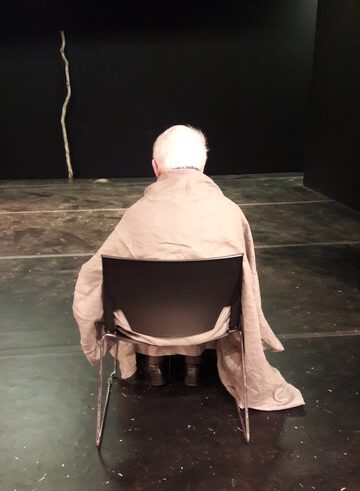
Peter Brook. Photo courtesy of Marie-Hélène Estienne
Lead photo credit : Peter Brook. © Colm Hogan
More in Bibliothèque Nationale de France, BNF, Les Bouffes du Nord, The Tempest Project

